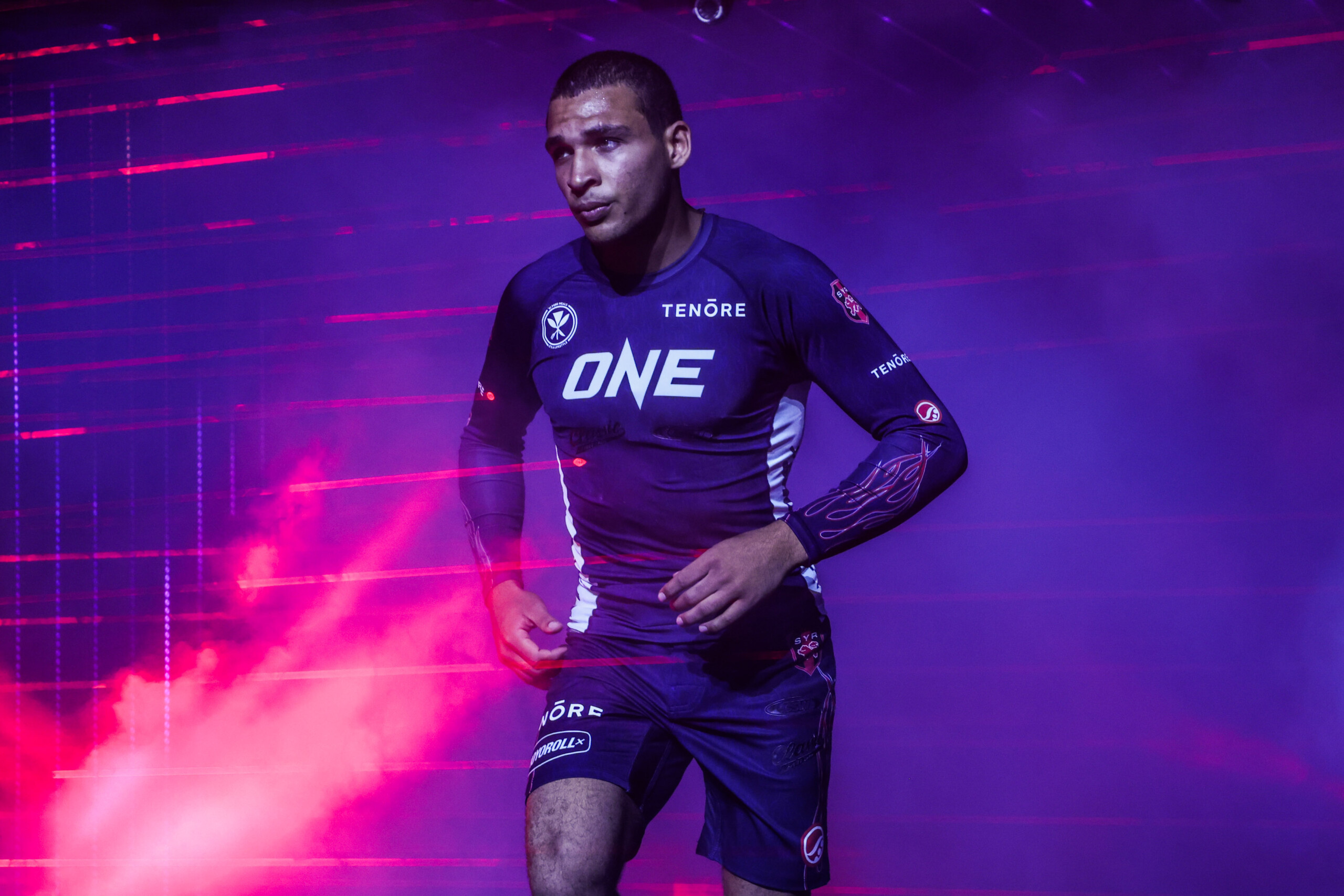The Differences Between Gi And No-Gi Brazilian Jiu-Jitsu

On Friday, April 5, in the co-main event of ONE Fight Night 21: Eersel vs. Nicolas on Prime Video, 21-year-old Brazilian Jiu-Jitsu phenom Tye Ruotolo will put his ONE Welterweight Submission Grappling World Title on the line against ultra-talented Australian star Izaak Michell.
Set to air live in U.S. primetime to over 190 countries from Lumpinee Boxing Stadium in Bangkok, Thailand, the matchup has grappling fans salivating and has captivated the global martial arts community.
The showdown between Ruotolo and Michell marks another step in the worldwide explosion of Brazilian Jiu-Jitsu. With the grappling art continuing to gain popularity at an incredible rate, we look into the key differences between gi and no-gi BJJ.
What Is Gi BJJ?
BJJ has traditionally been performed and practiced in the gi – the heavy martial arts uniform also known as a kimono.
Notably, grapplers can grip either their own or their opponent’s gi to execute a wide variety of techniques, from simple guard passes to complex sweeps to a multitude of submissions. Many practitioners, when putting on the gi for the first time, are surprised to learn that their own gi can be used against them to apply chokes.
While the ultimate goals of BJJ remain the same in the gi – controlling from a dominant position before achieving the submission – gi BJJ is often much slower and more complex than no-gi BJJ.
What Is No-Gi BJJ?
As the name suggests, no-gi BJJ is the same art, but grapplers wear the form-fitting athletic clothes seen in ONE’s submission grappling bouts.
Unlike gi BJJ, no-gi competitors are prohibited from gripping their opponent’s clothing. As a result, no-gi BJJ is often much faster-paced with plenty of scrambles and rapid changes in position.
What’s more, no-gi BJJ permits a wider range of submission holds, including heel hooks, twisters, and neck cranks.
Which One Is Better To Practice?
Those looking to try BJJ for the first time will naturally wonder if gi or no-gi is better. The answer isn’t simple or the same for everyone.
Because it is often slower and viewed as more technical and less physical, many BJJ instructors suggest practicing only in the gi to start. This way, the student can learn the nuance of control and foundations of BJJ without relying on speed or strength.
While gi BJJ is regularly the choice for older grapplers trying to avoid injury, some may find that the constant gripping is hard on their hands and wrists.
No-gi BJJ is a much faster form of grappling, and for this reason many find it more fun and exciting than gi BJJ. The addition of submissions not otherwise permitted in the gi adds to the draw.
However, no-gi BJJ places a stronger emphasis on athleticism, making it the second choice for many grapplers.


















